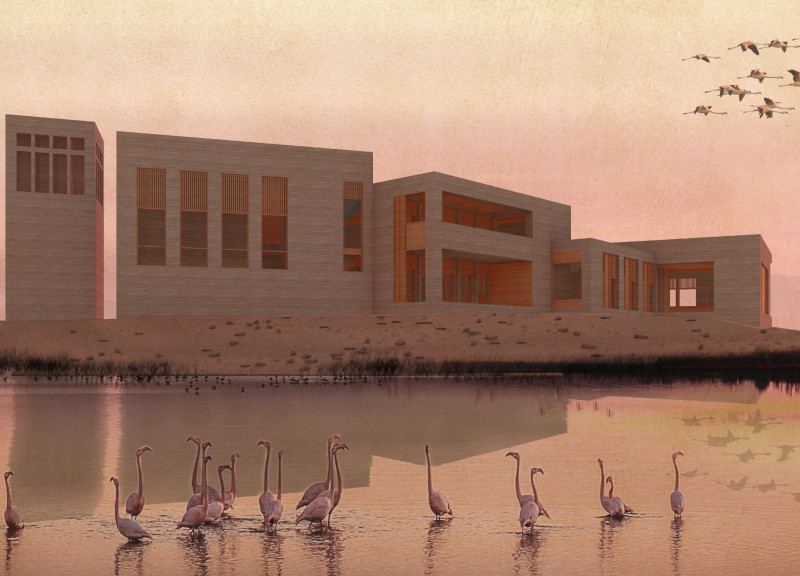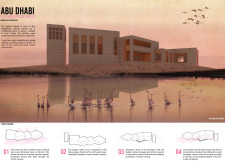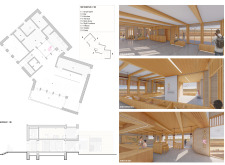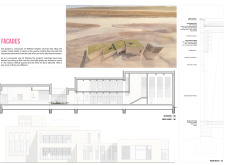5 key facts about this project
The central concept of the visitor center revolves around four cubic structures, each oriented to optimize views of the wetlands and enhance the visitor experience. This approach ensures that the building functions not only as a shelter but as an interactive space that invites exploration and learning.
Space is divided into distinct zones, encompassing exhibition areas, visitor services, and observation platforms. This layout facilitates a cohesive flow from entry to immersive outdoor experiences, featuring loggias and patios that provide transitional spaces between indoor activities and the natural surroundings.
Sustainable Material Use and Design Approach
One of the distinctive elements of the Flamingo Visitor Center is its use of rammed earth as a primary construction material. This choice reflects a commitment to regional architecture and environmental sustainability. Rammed earth offers thermal mass, reducing energy consumption for heating and cooling while providing a natural aesthetic that connects the building to its desert environment. Complementing this material, wood elements are employed for structural support and interior finishes, enhancing warmth and comfort within the space.
The design also incorporates double-glazed windows, facilitating natural light while maintaining energy efficiency. Green roofs contribute to insulation and biodiversity, exemplifying an understanding of the local climate and ecological systems. The placement and orientation of the structures optimize natural airflow, promoting passive cooling.
Architectural Interaction with Landscape
The architectural interaction with the landscape is further emphasized through the strategic rotation of each cubic structure. This design choice maximizes views of the wetlands and offers varied perspectives of the unfolding natural scenery. The integration of patios and observation decks allows visitors to engage directly with the environment, fostering a connection to the local ecosystem.
Key facilities within the center include multi-functional exhibition spaces that provide educational resources about the flamingos and their habitats, alongside areas designed for relaxation and social interaction, such as cafés with views of the wetlands. Staff facilities are incorporated to ensure operational capabilities while supporting the visitor experience.
For those interested in delving deeper into the architectural design and its unique features, exploring the project presentation can provide a comprehensive understanding. Architectural plans, sections, and detailed designs illustrate the innovative ideas that underpin the Flamingo Visitor Center, highlighting its thoughtful integration within its environmental context. Visitors and architects alike may find valuable insights into the project’s execution and overarching architectural narratives by reviewing these elements.


























